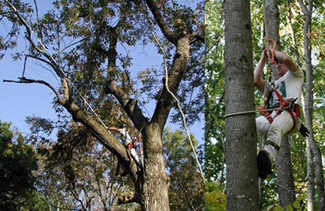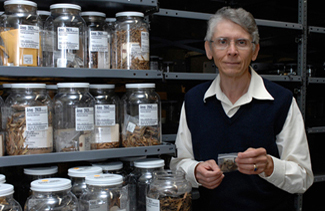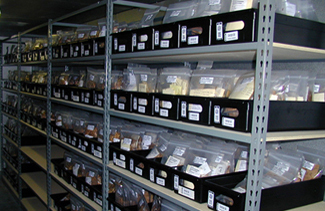| Progress Made |

|
What has been accomplished so far
The ash collection at the North Central Regional Plant Introduction Station in Ames, Iowa, currently consists of 358 accessions from 22 countries. For more details about the North American collections, please consult our maps. From within the United States, there are 263 accessions collected from 29 states.
Once seed samples of Fraxinus are received at the NCRPIS, passport data is reviewed to confirm information accuracy and to check for potential duplication. Once confirmed, accession numbers are assigned and data are loaded to GRIN. An accession number typically represents a population which includes numerous mother tree samples, stored as separate individual seed packets. A population is simply defined as a group of plants that are interbreeding and living in the same location at the same time. These individual mother tree samples are available to help fulfill requests for genetic studies requiring half-sib family structure. In addition to storing each mother tree sample separately, a portion of accessions have an available, balanced seed sample. This balanced seed sample is created by adding a very small, equal number of live seeds (determined via viability scores) from each mother tree. These balanced seed samples are available to fulfill requests requiring a portion of all the specimens sampled from a population. A balanced sample is only created when sufficient quantities of seeds are on hand. Seed requests should indicate whether individual or balanced samples are desired.
Prior to storage, seed samples are cleaned to remove all foreign debris and tested for viability. Viability is typically based on a sample of 100 seeds, or fewer depending on original seed quantity. Digital images of the seeds are captured and posted on public GRIN (https://www.ars-grin.gov/npgs/). Seeds are allowed to dry before being placed in cold storage and are allowed to equilibrate further in cold stroage before being placed in re-sealable, thick-plastic, see-through packaging. Following recommendations by the FAO/IPGRI's Genebank Standards (1994), long-term base collections at NCRPIS are maintained at -18C. Seed samples of sufficient quantity and quality are backed-up at the National Center for Genetic Resources Preservation (NCGRP) in Fort Collins, Colorado for long-term preservation.
-
FAO/IPGRI. 1994. Genebank Standards. Food and Agriculture Organization (FAO) and the International Plant Genetic Resources Institute (IPGRI), Rome, Italy.
The pictures below show the collecting and storage conditions at NCRPIS.
 Jeff Carstens harvesting ash seed
Collecting ash seed is not always easy. This combined image shows Jeff Carstens scaling a tree and using a pole saw to reach areas unsafe to climb.
Jeff Carstens harvesting ash seed
Collecting ash seed is not always easy. This combined image shows Jeff Carstens scaling a tree and using a pole saw to reach areas unsafe to climb. Mark Widrlechner with part of the ash seed collection
The distribution lots are stored at 5 ?C and 30% relative humidity.
Mark Widrlechner with part of the ash seed collection
The distribution lots are stored at 5 ?C and 30% relative humidity.Photo by Bob Elbert, Iowa State University.
 Ash seed collection in the freezer
Long-term storage of seeds is accomplished by storing them in our walk-in freezer, which is kept at -18 ?C. Backup samples are also stored at the NCGRP in Fort Collins, CO.
Ash seed collection in the freezer
Long-term storage of seeds is accomplished by storing them in our walk-in freezer, which is kept at -18 ?C. Backup samples are also stored at the NCGRP in Fort Collins, CO.